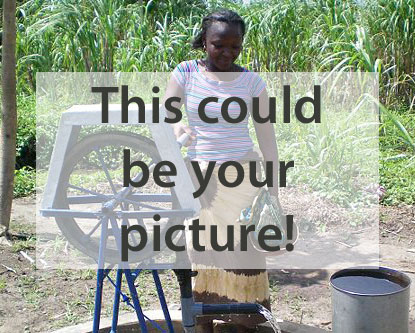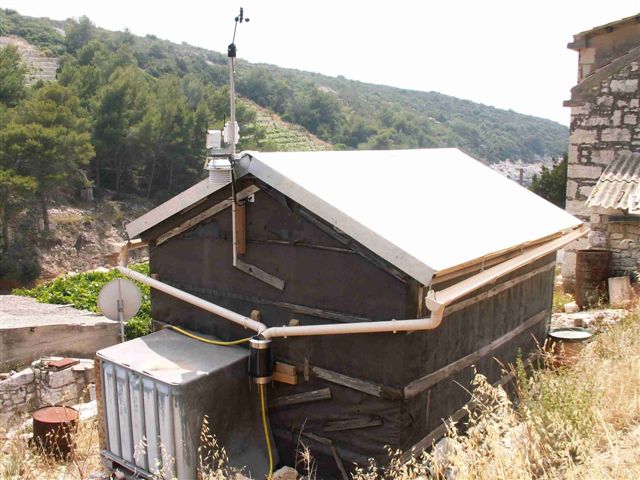Water Portal / Rainwater Harvesting / Rooftop rainwater harvesting
Rainwater harvesting refers to structures which catch rainwater and store it in underground or above-ground tanks for later use. Any suitable roof surface — tiles, metal sheets, plastics, but not grass or palm leaf — can be used to intercept the flow of rainwater and provide a household with high-quality drinking water. Rainwater harvesting systems have been used since antiquity, and examples abound in all the great civilizations throughout history.
In many cases, groundwater or surface water may be unavailable for drinking water. The groundwater level may be too deep, groundwater may be contaminated with minerals and chemicals such as arsenic or salt, surface water may be contaminated with faeces or chemicals. In these cases, rainwater harvesting can be an effective and low-cost solution.
Different catchment types are used, such as roof catchment, paved surface catchment, surface catchment and riverbed catchment. Water can be stored during the wet season using one of several methods, eg. an underground tank, wire-cement tank, sand dam or plastic-lined tank, until the water is needed in the dry season.
Several pump systems can then be used to lift the water from the tank, for example with a rope pump or with a deep well pump, which can elevate water up to a height of 30 m.
History and social context
Rainwater falls on your own roof, and is almost always of excellent quality. It enables people to manage their own water supply and provides the luxury of “water without walking”, relieving the burden of water carrying, particularly for women and children. This convenience is available at every house on which rain falls, whether on a mountain top or an island in a salt sea.
A rainwater harvesting system might be a 500 cubic meter underground storage tank, serving a whole community, or it might be just a bucket, standing underneath a roof without a gutter. Each 20 litre container of clean water might save a kilometers long walk to the nearest source of clean water, and as fetching water on cold, wet and slippery days is particularly unpleasant, even this small yield is highly valued. In Uganda and Sri Lanka, rainwater is traditionally collected from trees, using banana leaves or stems as temporary gutters.
It is a technology which is extremely flexible and adaptable to a wide variety of settings, it is used in the richest and poorest societies on the planet, and in the wettest and driest regions of the world.
Suitable conditions
| Advantages | Disadvantages/limitations |
|---|---|
| - Possible in almost any climate - Rainwater is good quality water |
- Storage is needed to bridge dry periods |
Technical specification
Operation
Maintenance
Manufacturing
Cost
Country experiences
Manuals
Movies
- Rainwater Harvesting Nepal, by BSP-Nepal
- Rooftop Rainwater harvesting India, by Zenrainman, [1], documenting the Sachetana programme of the government of Karnataka, India.
- Rain water advocacy movie produced by CSE, India
External links
References

|

